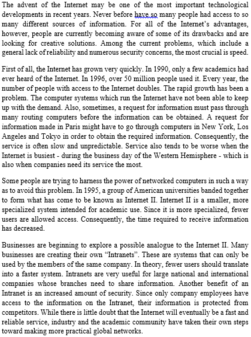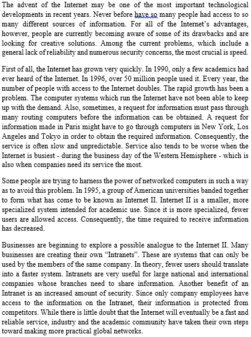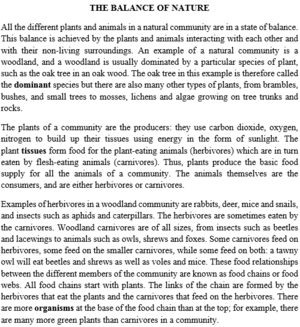Read the following passage and mark the letter A, B, C, or D to indicate the correct answer to each of the questions.
In most of the earliest books for childre n, illustrations were an afterthought. But in the Caldecott “toy books”, which first appeared in 1878, they were almost as important as the lines of text, and occupied far more space in the book. One can almost read the story from the dramatic action in the pictures.
Since then, thousands of successful picture books have been published in the United States and around the world. In the best, the words and illustrations seem to complement each other perfectly. Often a single person, is responsible for both writing and illustrating the book. One of the greatest, and certainly one of the most successful, illustrator-authors was Dr. Seuss, whose real name was Theodor Geisel. His first children’s book, And to Think That I Saw It on Mulberry Street, hit the market in 1937, and the world of children’s literature was changed forever. Seuss’s playful drawings were a perfect complement to his engaging stories and unforgettable characters. In 1957, Seuss’s The Cat in the Hat became the first book in Random House’s best -selling series, Beginner Books, written by Seuss and several other authors. These combine outrageous illustrations of people, creatures, and plants, and playful stories written in very simple language.
Dr. Seuss is not the only well-known author-illustrator, of course. There is Max Sendak, who wrote and illustrated Where the Wild Things Are, the story of a little boy named Max, who becomes king of the fierce ( but funny) creatures that live in the Land of the Wilds Things. Robert McCloskey produced both the richly textured illustrations and delightful story of a family of ducks living in downtown Boston, Make Ways for Ducklings. Some books are produced by a collaborative author artist team. Author Margaret Wise Brown combined with illustrator Clement Hurd to produce two delightful books loved by very young children, Goodnight Moon and The Runaway Bunny. Another example is the husband-and-wife team of writer Audrey Wood and illustrator Don Wood, who were responsible for King Bidgood’s in the Bathtub and The Napping House.
Wordless and nearly wordless picture books have become popular. With a little help, threeand four-year-olds can follow the sequence of events, and they can understand the stories suggested in them. The marvel of books with few or no words is that they allow children and their parents the opportunity to tell and retell the same stories over and over in their own words. One of the most charming examples of a wordless book is Jan Omerod’sSunshine. Barbara Berger’s Grandfather Twilight and David Weisner’s Tuesday are examples of books containing only a few words.
U.S. publishers have also drawn on illustrators from other countries whose original, imaginative works have brought their different visions to American children’s books. Among them are Leo Lionni from Italy, Feodor Rojankovsky from Russia, and Taro Yashimi from Japan.
“Sunshine” is given in the passage as an example of a book that _______
A. is very charming
B. is only for children
C. contains only pictures
D. contains only a few words





Đáp án C
Ý trong bài: One of the most charming examples of a wordless book is Jan Omerod’sSunshine